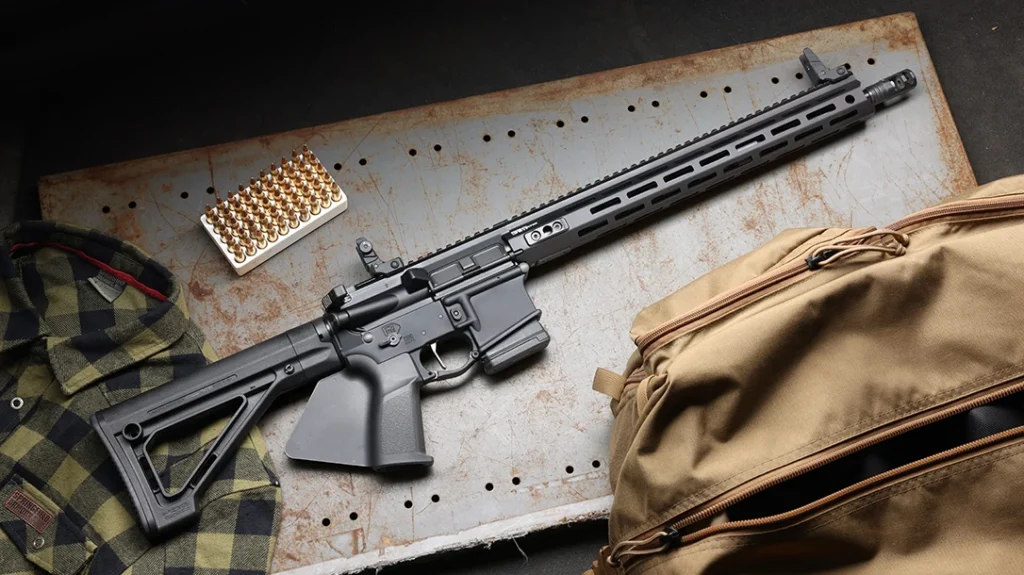Springfield didn’t just tinker with the Saint Victor, they rebuilt the recipe with a few pro-grade ingredients that matter when the shooting gets serious. The new lineup spans 5.56 and 7.62 variants (pistols, carbines and rifles), and the upgrades are focused squarely on durability, repeatable accuracy, and better ergonomics for fast manipulations.
New Saint Victor Features
Under the hood you get a thoughtful mix of material and design upgrades. The receivers are forged from 7075-T6 aluminum with an Accu-Tite tension system to tighten the upper/lower fit. Springfield uses 4150 CMV tapered barrels finished in nitride for wear and corrosion resistance. Tapered contours that help shed heat while keeping the barrel rigid for better groups.
Advertisement — Continue Reading Below
The bolt carrier is an M16-pattern BCG with a 9310 Carpenter-steel bolt (HP/MPI tested) and a nitride finish, plus a hard-chromed firing pin and a properly staked gas key for long-term reliability. Out front there’s a free-floated M-LOK handguard with a full-length top Picatinny rail and multiple QD sling cups for real-world mounting flexibility.
Springfield also added some extra touches to the line: Radian Raptor-LT charging handles, a nickel-boron coated trigger for a slicker, lower-friction pull, 45-degree ambidextrous safeties, and B5 SOPMOD stocks paired with Type 23 P-grips and polymer trigger guards. The muzzle is topped with a four-prong flash hider (and note that the 14″ 5.56 model is pinned and welded to reach a 16″ overall length). While gas systems are tuned depending on barrel length (carbine, mid, intermediate or rifle) as appropriate. Those are feature choices that make the Saint Victor feel like a step up from what you’ll find in the mid-price AR market.
Hands On With The Saint Victor
We don’t just rely on spec sheets. In hands-on testing reported at Athlon by Fred Mastison, the second generation Saint Victor ran clean through roughly 500 rounds across different ammo types with zero malfunctions. And produced repeatable accuracy that held up out to several hundred yards when the shooter dialed it in. That kind of real-world reliability is exactly the point of these updates. Read Fred’s full review here.
Advertisement — Continue Reading Below

Springfield is offering a bunch of configurations (11.5″, 14″, 16″, 20″ and AR-10/7.62 versions) with MSRPs that place the line between sensible value and pro features. Most 5.56 Saint Victors land around the $1,249–$1,279 range while the 7.62 pieces sit higher around the mid-$1,600s to $1,689. If you want an AR that leans heavily toward duty-grade durability without the boutique price tag, these new Saint Victors are worth a look.
Bottom Line
Springfield took a successful formula and sharpened it. The redesign isn’t flashy, it’s practical; improved metallurgy, better fit-and-finish, and shooter-friendly controls. Exactly what a workhorse AR should be. If you’re shopping for a dependable, modernized AR that won’t embarrass you at the range or under stress, the redesigned Saint Victor just moved that bar up.
Advertisement — Continue Reading Below
